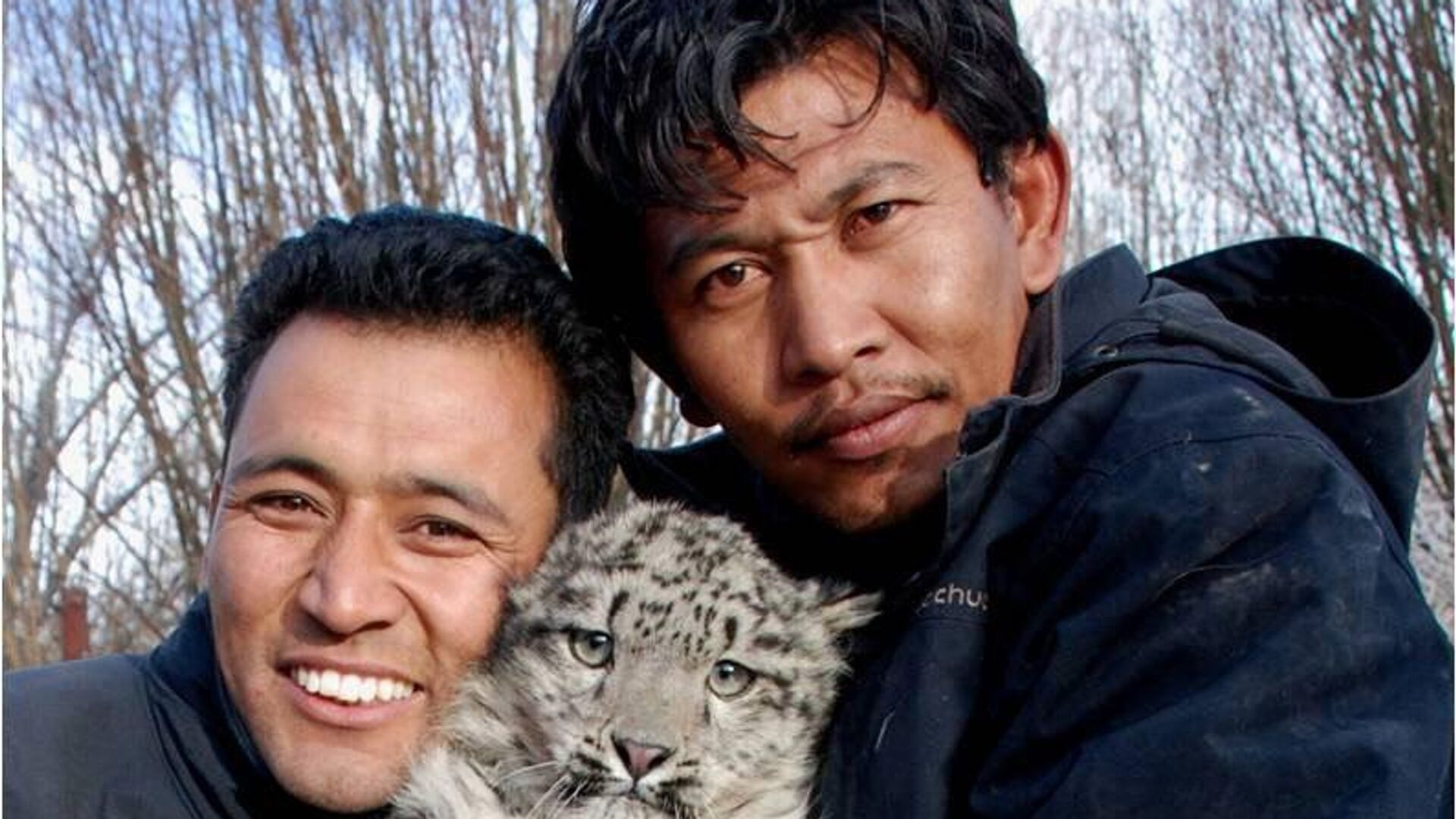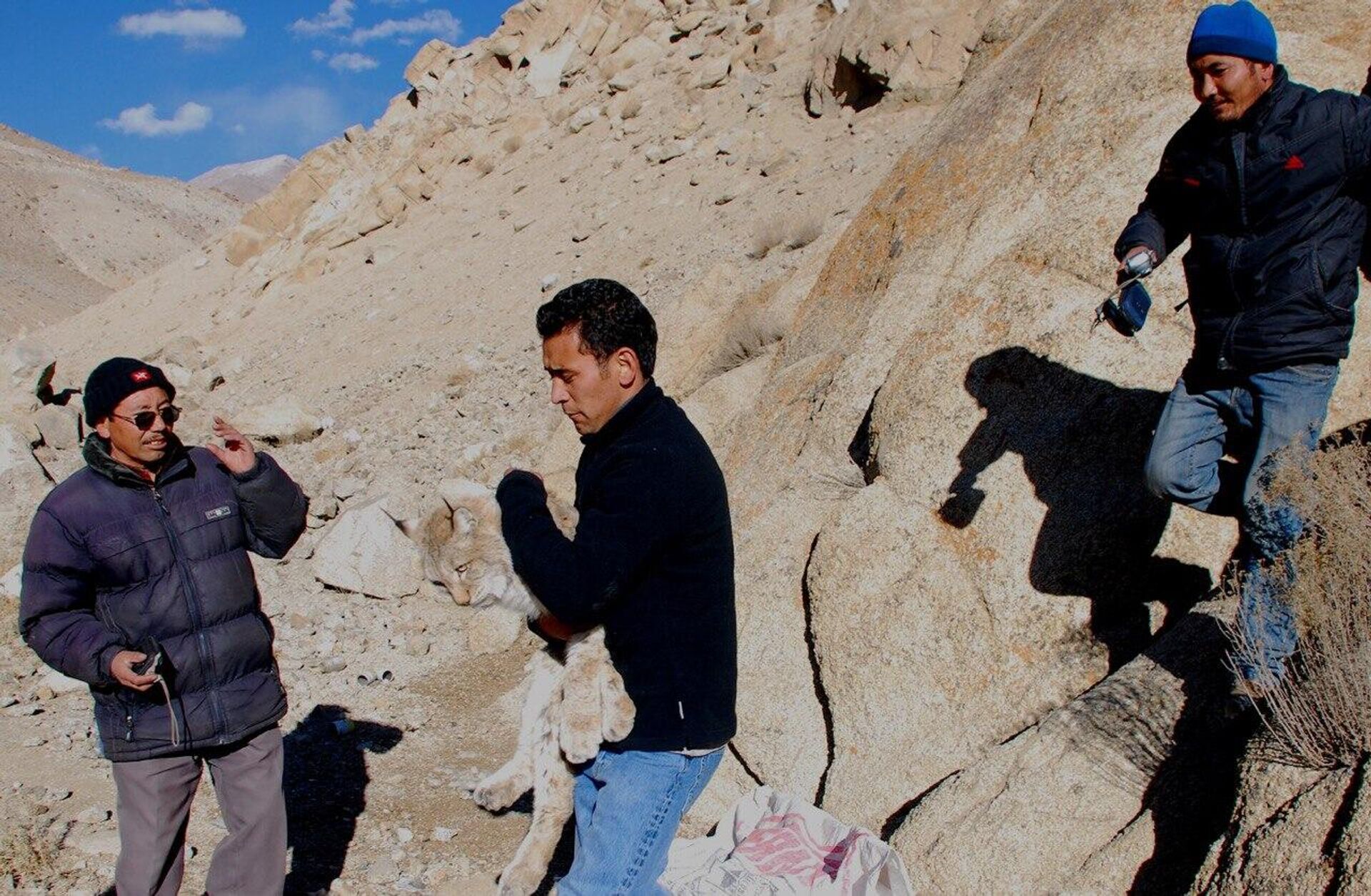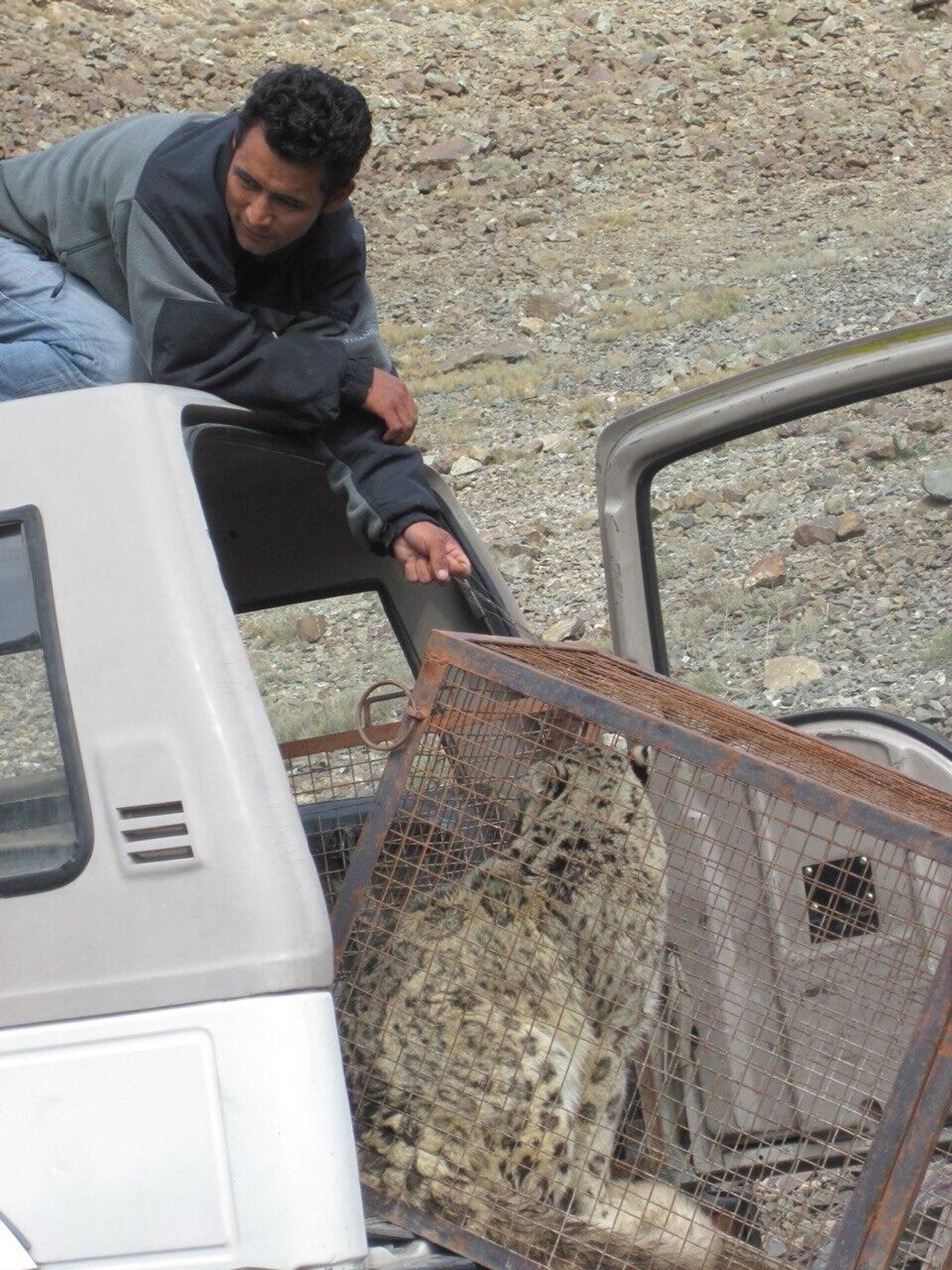https://sputniknews.in/20231022/snow-leopard-day-sightings-of-himalayas-grey-ghost-proves-ladakh-is-wildlife-hotspot-4975978.html
Snow Leopard Day: Sightings of Himalayas' Grey Ghost Cement Ladakh as Wildlife Hotspot
Snow Leopard Day: Sightings of Himalayas' Grey Ghost Cement Ladakh as Wildlife Hotspot
Sputnik India
Every year on 23 October the world celebrates International Snow Leopard Day which serves as a powerful reminder to protect the majestic big cat and its habitat.
2023-10-22T19:30+0530
2023-10-22T19:30+0530
2023-10-23T12:36+0530
sputnik exclusives
india
ladakh
the himalayas
snow leopard
wildlife
https://cdn1.img.sputniknews.in/img/07e7/0a/16/5012062_0:216:794:663_1920x0_80_0_0_e02ab5f738c70644eee5ca46b24a5f0a.jpg
The Ladakh Union Territory of India, nestled in the breathtaking Himalayan region, has become a habitat for more than 300 majestic snow leopards, also known as Grey Ghosts, attracting wildlife enthusiasts from all over the world.Snow Leopard's Population"Some of the best areas to spot snow leopard in Ladakh include Rumbak, Shang, Ulley, Saspochey, Hemis Shukpachan and Mangyu villages," award-winning snow leopard conservationist Khenrab Phuntsog said.While wildlife experts believe that the population of snow leopards in India is increasing, a report by the World Wide Fund for Nature (WWF) revealed that India is home to around 700 snow leopards spread across the Himalayan region.It is estimated that there are only about 4,000 snow leopards left worldwide.Cash in on Snow Leopard TourismThe conservation of snow leopard’s habitat in India has led to a rise in eco-tourism.During winter, wildlife enthusiasts from around the world travel to Ladakh for snow leopard sightings.The Ladakh community participating in snow leopard conservation has benefited from the better income and opportunities."Eco-Tourism has contributed to local travel operators, hotels and homestays, cab drivers, guides, spotters, helpers, cooks, and others as during winters, there used not to be much income," he added.Biggest Threat to Snow Leopards in IndiaFrom habitat destruction to climate change, the snow leopards living on extremely difficult terrain face major threats, resulting in a decline in their population.According to Phuntsog, although the trophy hunting of the snow leopard has ended in the region because of community awareness, the biggest risk big cats are facing is the growing population of feral dogs that hunt in groups and prey on snow leopards as well as other wildlife.Amid a rise in human-animal conflict, wildlife and forest wardens have been working with the village communities advocating snow leopard conservation.
https://sputniknews.in/20231017/leopard-encounter-instills-panic-into-kopargaon-residents-in-maharashtra-4892079.html
india
ladakh
the himalayas
Sputnik India
feedback.hindi@sputniknews.com
+74956456601
MIA „Rossiya Segodnya“
2023
Sangeeta Yadav
https://cdn1.img.sputniknews.in/img/07e6/0c/0f/110602_0:0:641:640_100x100_80_0_0_c298016a79eb02ef8caa9d1f688c12a5.jpg
Sangeeta Yadav
https://cdn1.img.sputniknews.in/img/07e6/0c/0f/110602_0:0:641:640_100x100_80_0_0_c298016a79eb02ef8caa9d1f688c12a5.jpg
News
en_IN
Sputnik India
feedback.hindi@sputniknews.com
+74956456601
MIA „Rossiya Segodnya“
Snow Leopard Day: Sightings of Himalayas' Grey Ghost Proves Ladakh Is Wildlife Hotspot
Sputnik India
Snow Leopard Day: Sightings of Himalayas' Grey Ghost Proves Ladakh Is Wildlife Hotspot
2023-10-22T19:30+0530
true
PT0M44S
Sputnik India
feedback.hindi@sputniknews.com
+74956456601
MIA „Rossiya Segodnya“
Sangeeta Yadav
https://cdn1.img.sputniknews.in/img/07e6/0c/0f/110602_0:0:641:640_100x100_80_0_0_c298016a79eb02ef8caa9d1f688c12a5.jpg
snow leopard day, why is snow leopard day celebrated, what day is national leopard day, are snow leopards russian, snow leopards in ladakh, snow leopards in himalayan region, snow leopards in india
snow leopard day, why is snow leopard day celebrated, what day is national leopard day, are snow leopards russian, snow leopards in ladakh, snow leopards in himalayan region, snow leopards in india
Snow Leopard Day: Sightings of Himalayas' Grey Ghost Cement Ladakh as Wildlife Hotspot
19:30 22.10.2023 (Updated: 12:36 23.10.2023) Every year on 23 October the world celebrates International Snow Leopard Day which serves as a powerful reminder to protect the majestic big cat and its habitat.
The Ladakh Union Territory of India, nestled in the breathtaking Himalayan region, has become a habitat for more than 300 majestic snow leopards, also known as Grey Ghosts, attracting wildlife enthusiasts from all over the world.
Snow Leopard's Population
"Some of the best areas to spot snow leopard in Ladakh include Rumbak, Shang, Ulley, Saspochey, Hemis Shukpachan and Mangyu villages," award-winning snow leopard conservationist Khenrab Phuntsog said.
While wildlife experts believe that the population of snow leopards in India is increasing, a report by the World Wide Fund for Nature (WWF) revealed that India is home to around 700 snow leopards spread across the Himalayan region.
"Compared with the past five decades, the snow leopard population has increased in Ladakh. Because of community participation in conservation - thanks to awareness programmes by both government and NGOs - the trophy hunting has now ended," Phuntsog told Sputnik India.
The snow leopard, found in mountainous regions throughout 12 countries including Russia, China, Mongolia, Nepal, India, Pakistan, Afghanistan, and Kazakhstan, is ranked at present as Vulnerable on the International Union for Conservation of Nature (IUCN) Red List.
It is estimated that there are only about 4,000 snow leopards left worldwide.
Cash in on Snow Leopard Tourism
The conservation of snow leopard’s habitat in India has led to a rise in eco-tourism.
"Ladakh started pioneering snow leopard tourism nearly two decades ago. It has set an example to other countries where the snow leopard exists to drive community-based eco-tourism by using the magnificent big cat as a tool. It is good to see now that this sort of activity is being copied in many parts where the snow leopard can be found," Phuntsog said.
During winter, wildlife enthusiasts from around the world travel to Ladakh for snow leopard sightings.
The Ladakh community participating in snow leopard conservation has benefited from the better income and opportunities.
"The snow leopard tourism or eco-tourism, is enhancing the livelihood of people in this remote area and helping to strengthen the bond between humans and animals," he said.
"Eco-Tourism has contributed to local travel operators, hotels and homestays, cab drivers, guides, spotters, helpers, cooks, and others as during winters, there used not to be much income," he added.
Biggest Threat to Snow Leopards in India
From habitat destruction to climate change, the snow leopards living on
extremely difficult terrain face major threats, resulting in a decline in their population.
According to Phuntsog, although the trophy hunting of the snow leopard has ended in the region because of community awareness, the biggest risk big cats are facing is the growing population of feral dogs that hunt in groups and prey on snow leopards as well as other wildlife.
Amid a rise in human-animal conflict, wildlife and forest wardens have been working with the village communities advocating snow leopard conservation.
"Our vision for the future of snow leopard conservation is to create a harmonious coexistence between humans and wildlife, fostering a sustainable living environment for all living beings on this planet Earth. The challenge is huge but at least we all have to keep trying so that something will happen in the future," Phuntsog said.





